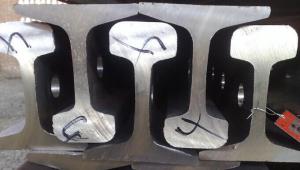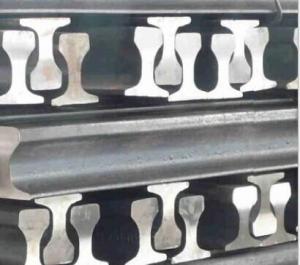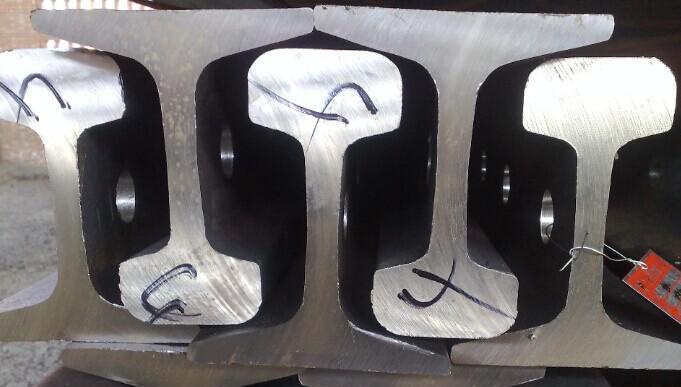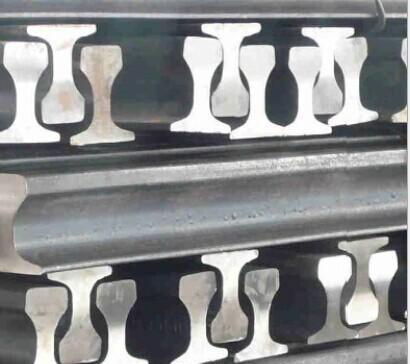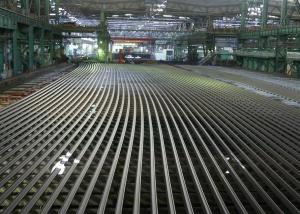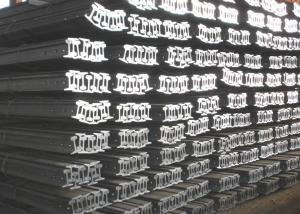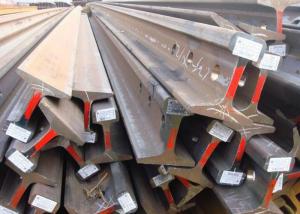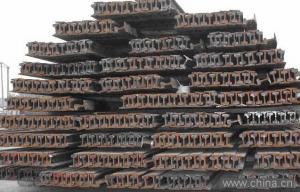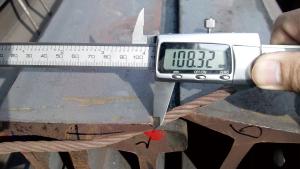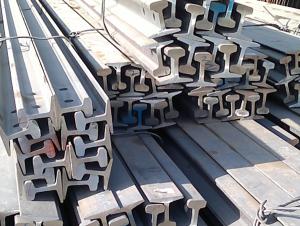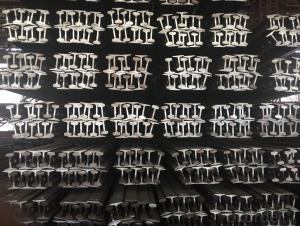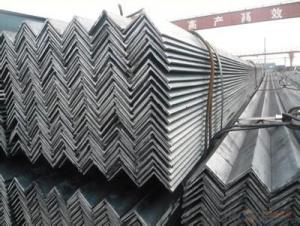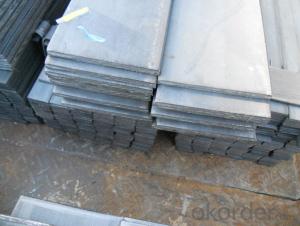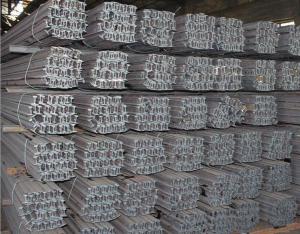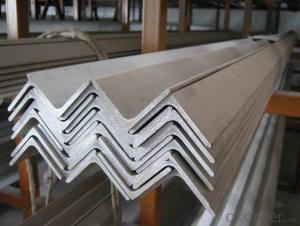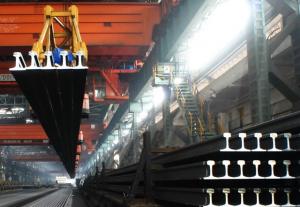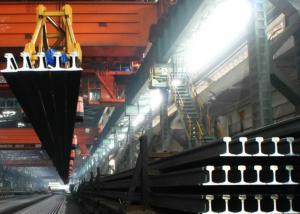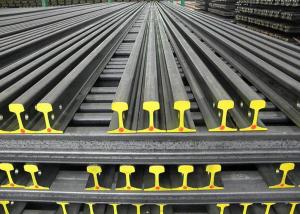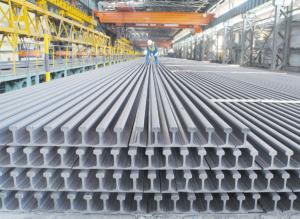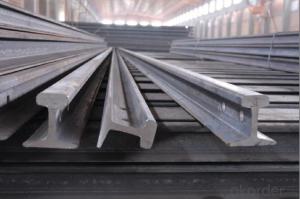Hot Rolled Light Steel Rail Q235 with High Quality
- Loading Port:
- China Main Port
- Payment Terms:
- TT or LC
- Min Order Qty:
- 20 m.t.
- Supply Capability:
- 5000 m.t./month
OKorder Service Pledge
OKorder Financial Service
You Might Also Like
Product Description:
OKorder is offering Hot Rolled Light Steel Rail Q235 with High Quality at great prices with worldwide shipping. Our supplier is a world-class manufacturer of steel, with our products utilized the world over. OKorder annually supplies products to European, North American and Asian markets. We provide quotations within 24 hours of receiving an inquiry and guarantee competitive prices.
Product Applications:
Hot Rolled Light Steel Rail Q235 with High Quality is mainly used in forest region, mines, factories and construction sites laid of the place such as temporary transport line and light motorcycles with line.
Product Advantages:
OKorder's Hot Rolled Light Steel Rail Q235 with High Quality are durable, strong, and with competitive price
Main Product Features:
· Premium quality
· Prompt delivery & seaworthy packing (30 days after receiving deposit)
· Corrosion resistance
· Can be recycled and reused
· Mill test certification
· Professional Service
· Competitive pricing
Product Specifications:
Manufacture: Hot rolled
Certificates: ISO, SGS, BV, CIQ
Length: 6m – 25m, as per customer request
Packaging: Export packing, nude packing, bundled
Production Standard: GB 11264-89, GB2585-81, AREMA2008, JIS, DIN536, EN13674-1-2003, etc.
Sizes: 9kg-60kg
FAQ:
Q1: Why buy Materials & Equipment from OKorder.com?
A1: All products offered byOKorder.com are carefully selected from China's most reliable manufacturing enterprises. Through its ISO certifications, OKorder.com adheres to the highest standards and a commitment to supply chain safety and customer satisfaction.
Q2: How do we guarantee the quality of our products?
A2: We have established an advanced quality management system which conducts strict quality tests at every step, from raw materials to the final product. At the same time, we provide extensive follow-up service assurances as required.
Q3: How soon can we receive the product after purchase?
A3: Within three days of placing an order, we will begin production. The specific shipping date is dependent upon international and government factors, but is typically 7 to 10 workdays.
Q4:What is the package
A4: Standard seaworthy packing or as customer required; all goods are packed in bundle with steel strips and shipped by break bulk vessel or container
Q5:Can OKorder.com make the color marking?
A5: There will be color marking on both end of the bundle for the cargo delivered by bulk vessel. That makes it easily to distinguish at the destination port.
Images:
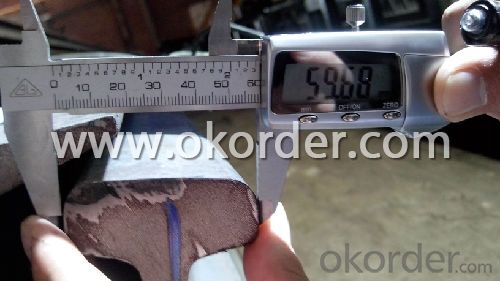
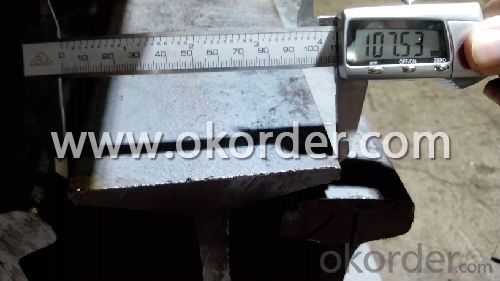
- Q: What is the weight per meter of steel rails?
- The weight per meter of steel rails can vary depending on the specific type and size of the rail. On average, standard steel rails typically weigh around 30 kilograms per meter.
- Q: What is the impact of heavy loads on steel rails?
- The impact of heavy loads on steel rails can have both short-term and long-term effects. In the short-term, heavy loads can cause immediate deformation and damage to the steel rails. This can lead to misalignment, increased wear, and potential derailment risks. The excessive weight can cause the rails to bend or buckle under the pressure, resulting in uneven tracks and reduced stability. Over time, the repeated passage of heavy loads can cause fatigue in the steel rails. Fatigue is the gradual weakening of the material due to cyclic loading, which can lead to cracks and fractures. These cracks can grow and propagate, compromising the structural integrity of the rails and increasing the likelihood of failure. The impact of heavy loads on steel rails also affects the overall maintenance and lifespan of the infrastructure. With increased loads, the rails require more frequent inspections and maintenance to identify and repair any damage caused by the heavy loads. This can lead to higher maintenance costs and potential disruptions to train services. Furthermore, heavy loads can accelerate the deterioration of other components of the rail system, such as fasteners, sleepers, and ballast. These components, when subjected to excessive weight, can experience increased stress and strain, resulting in premature wear and failure. To mitigate the impact of heavy loads on steel rails, rail operators and infrastructure managers implement various measures. This includes regular inspections, maintenance programs, and reinforcement of vulnerable sections. Additionally, technological advancements in rail design and materials can help improve the load-bearing capacity of steel rails and enhance their resistance to heavy loads. In conclusion, heavy loads impose significant stress on steel rails, leading to immediate deformation, increased wear, and potential derailment risks. Over time, this can result in fatigue, cracks, and fractures, compromising the integrity of the rails. Moreover, heavy loads accelerate the deterioration of other rail components. Therefore, proper maintenance, inspection, and reinforcement are essential to mitigate the impact of heavy loads and ensure the safe and efficient operation of the rail infrastructure.
- Q: How do steel rails compare to other materials in terms of cost?
- Steel rails are generally more cost-effective compared to other materials due to their durability, longevity, and lower maintenance requirements.
- Q: How do steel rails handle heavy train braking forces?
- The purpose of steel rails is to handle the intense forces generated by train braking. The durability and strength of steel make it an ideal material for rail tracks. When a train applies brakes, it exerts a significant amount of force on the rails. Steel rails, with their high tensile strength, can withstand these forces without warping or breaking. The design of the rail tracks is also crucial in managing heavy braking forces. The rails are placed on a well-compacted ballast, creating a stable foundation. This helps evenly distribute the braking forces across the track, preventing excessive stress on any one section. Additionally, the rails are securely fastened to the sleepers using bolts or clips to ensure they stay in place during braking. The shape of the steel rails also contributes to their ability to handle heavy braking forces. They have a slight concave shape, known as the "rail profile," which allows the train wheels to maintain better contact with the rails while braking. This minimizes the risk of derailment or excessive wear on the wheels. Regular maintenance and inspection of the rail tracks are essential to ensure they can handle heavy braking forces. Inspections are conducted to identify any signs of wear, fatigue, or damage on the rails. Any issues found are promptly addressed through repair or replacement to maintain the tracks' integrity and safety. In conclusion, steel rails are specifically designed to withstand the immense forces generated by train braking. Their high tensile strength, stable foundation, secure fastening, and curved shape enable them to handle these forces without deformation or failure. Proper maintenance and inspection further ensure their ongoing ability to handle heavy braking forces efficiently and safely.
- Q: What is the role of steel rails in train wheel-rail interaction?
- The role of steel rails in train wheel-rail interaction is crucial for the safe and efficient operation of trains. Steel rails are the tracks upon which train wheels run, providing a stable and durable surface for the wheels to roll on. One of the primary roles of steel rails is to support the weight of the train and distribute it evenly across the track. The rails are designed to withstand the immense loads exerted by the train, ensuring that the weight is not concentrated in any specific area but spread out over a larger surface. This helps prevent excessive wear and deformation of the rails, ensuring their longevity. Steel rails also guide the train wheels along the desired path, preventing lateral movement or deviation from the track. They provide a fixed reference point for the wheels, maintaining the train's stability and preventing derailment. The precise alignment and maintenance of the rails are critical to maintaining safe train operations. Additionally, steel rails play a crucial role in transmitting the tractive force from the train wheels to propel the train forward. The interaction between the wheels and rails generates friction, enabling the transfer of power from the locomotive to the wheels. The low coefficient of friction between steel rails and train wheels allows for efficient energy transmission, allowing trains to reach high speeds and maintain traction even on steep inclines. Furthermore, steel rails contribute to the overall safety of train operations by providing a predictable and controlled environment for train wheel-rail interaction. The smooth surface of the rails minimizes vibrations and jolts, ensuring a comfortable ride for passengers and reducing the strain on the train's components. Properly maintained rails also promote effective braking, allowing trains to come to a controlled stop and enhancing overall safety. In conclusion, steel rails are essential in train wheel-rail interaction as they provide support, guidance, and a stable surface for the wheels to roll on. They play a crucial role in distributing weight, maintaining train stability, enabling efficient power transmission, and ensuring safe and comfortable train operations.
- Q: How do steel rails contribute to train track stability?
- Steel rails play a crucial role in ensuring the stability of train tracks. Firstly, steel rails provide a firm and durable foundation for the train wheels to roll on. The strength and rigidity of steel help to distribute the weight of the train evenly, preventing any excessive stress on the tracks. This is particularly important when considering the heavy loads that trains carry. Moreover, steel rails have a high resistance to wear and tear, which is essential for maintaining the stability of the tracks. Trains exert immense pressure on the rails, and over time, this can lead to deformation or damage if the material is not strong enough. However, steel's robustness allows it to withstand these forces without deforming, ensuring the track remains stable. Additionally, steel rails are designed with specific dimensions and profiles that further enhance stability. The shape of the rail, with its raised edges and tapered inner section, helps to guide the train wheels, preventing derailments or lateral movements. The precise alignment and spacing of the rails also contribute to stability, ensuring that the train remains on track and experiences minimal vibrations. Furthermore, steel rails are often secured to the sleepers or ties using fasteners, such as clips or bolts. These fasteners firmly hold the rails in place, preventing any shifting or displacement during train movements. The secure attachment of the rails to the sleepers ensures that the track structure remains intact and stable, even under the influence of dynamic forces. In conclusion, steel rails contribute significantly to train track stability through their strength, durability, and precise design. They provide a solid foundation for the train wheels, resist wear and tear, guide the train's movement, and are securely fastened to the sleepers. All these factors work together to ensure a safe and stable environment for trains to operate, minimizing the risk of accidents or derailments.
- Q: What are the common problems associated with steel rails?
- Steel rails are associated with several common problems that can impact the safety and efficiency of railways. One primary concern is the constant contact between the steel rails and train wheels, which leads to wear and tear. Over time, this can cause rail corrosion, deformation, and cracks, weakening the rails and potentially leading to derailments. Another issue is the accumulation of debris, like dirt, leaves, and ice, on the rail surface. This creates a slippery surface that reduces traction between the train wheels and rails, resulting in reduced braking efficiency and increased stopping distances. This poses a safety risk. Extreme weather conditions also have a negative impact on steel rails. In colder climates, the rails contract, leading to rail buckling or track misalignment. Conversely, in hotter weather, thermal expansion causes the rails to expand, leading to track buckling. Both situations result in track deformations and disrupt train services. Additionally, heavily trafficked areas can cause fatigue failure in steel rails. The repetitive loading and unloading of trains cause stress and microcracks to accumulate over time. If not promptly detected and repaired, this can result in catastrophic rail failures. Furthermore, maintenance challenges are a common problem with steel rails. Regular inspections and repairs are necessary, but the vast network of rail tracks and the need for continuous operation make maintenance difficult without disrupting train services. In conclusion, the common problems associated with steel rails include wear and tear, debris build-up, extreme weather effects, fatigue failure, and maintenance challenges. Regular inspection, maintenance, and technological advancements in rail design and materials are crucial to ensure the safe and efficient functioning of railways.
- Q: What are the safety measures for workers during steel rail repairs?
- When conducting steel rail repairs, the safety of workers must be given top priority. Here are several essential safety measures that should be incorporated: 1. Adequate training: Workers must receive thorough training on the specific procedures and techniques involved in steel rail repairs. This encompasses understanding the correct use of tools and equipment, as well as adhering to safety protocols. 2. Personal Protective Equipment (PPE): It is essential to provide workers with suitable PPE, including hard hats, safety glasses, high-visibility clothing, steel-toed boots, and gloves. These protective gears play a critical role in minimizing the risk of head and eye injuries, as well as slips, trips, and falls. 3. Hazard identification and control: Before commencing any repair work, a comprehensive risk assessment must be carried out. Identifying potential hazards such as sharp edges, electrical hazards, or exposure to hazardous substances is of utmost importance. Necessary control measures should be implemented to either eliminate or minimize these risks. 4. Safe access and egress: Workers must be provided with safe access and exit points to the work area. This involves maintaining walkways, stairs, and ladders in good condition, as well as ensuring adequate lighting to prevent accidents. 5. Lockout/tagout procedures: If electrical equipment is involved in the repair work, it is crucial to follow lockout/tagout procedures to isolate and deactivate all energy sources. This significantly reduces the risk of electrical shocks or electrocution. 6. Ventilation and respiratory protection: If workers are exposed to fumes, dust, or other airborne contaminants during steel rail repairs, appropriate ventilation systems must be in place. Additionally, respiratory protection equipment should be provided if necessary to prevent inhalation of hazardous substances. 7. Communication and coordination: Clear communication and coordination among workers are vital to ensure their safety. This includes regular safety briefings, the use of proper signage, and effective communication channels to report any potential hazards or incidents. 8. Emergency preparedness: It is essential to have emergency response plans in place, and workers should be familiar with evacuation routes, assembly points, and the use of fire extinguishers. First aid kits and emergency contact information should be easily accessible at the worksite. 9. Regular inspections and maintenance: Routine inspections of tools, equipment, and work areas should be conducted to identify any potential hazards or defects. Any issues should be promptly addressed to maintain a safe working environment. 10. Ongoing safety training and awareness: Regular safety training must be provided to workers, fostering a culture of safety within the workforce. This includes reminding them of safety procedures and encouraging them to report any safety concerns or near misses. By implementing these safety measures, the risk of accidents, injuries, and health hazards can be significantly reduced during steel rail repairs, thereby ensuring the well-being of workers.
- Q: Can steel rails be used in freight railways?
- Yes, steel rails are commonly used in freight railways. Steel rails offer several advantages over other types of rail materials, making them an ideal choice for heavy-duty freight transportation. Steel rails are durable, strong, and can withstand the immense weight and pressure exerted by freight trains. They also have excellent resistance to wear and tear, ensuring a longer lifespan and reduced maintenance costs. Additionally, steel rails have good conductivity, allowing for efficient power transmission between the train and the tracks. Overall, steel rails are a reliable and widely used option for freight railways due to their strength, durability, and cost-effectiveness.
- Q: What is the lifespan of steel rails?
- The lifespan of steel rails can vary depending on various factors such as usage, maintenance, and environmental conditions. However, with proper maintenance and regular inspections, steel rails can typically last for several decades before requiring replacement.
Send your message to us
Hot Rolled Light Steel Rail Q235 with High Quality
- Loading Port:
- China Main Port
- Payment Terms:
- TT or LC
- Min Order Qty:
- 20 m.t.
- Supply Capability:
- 5000 m.t./month
OKorder Service Pledge
OKorder Financial Service
Similar products
Hot products
Hot Searches
Related keywords
